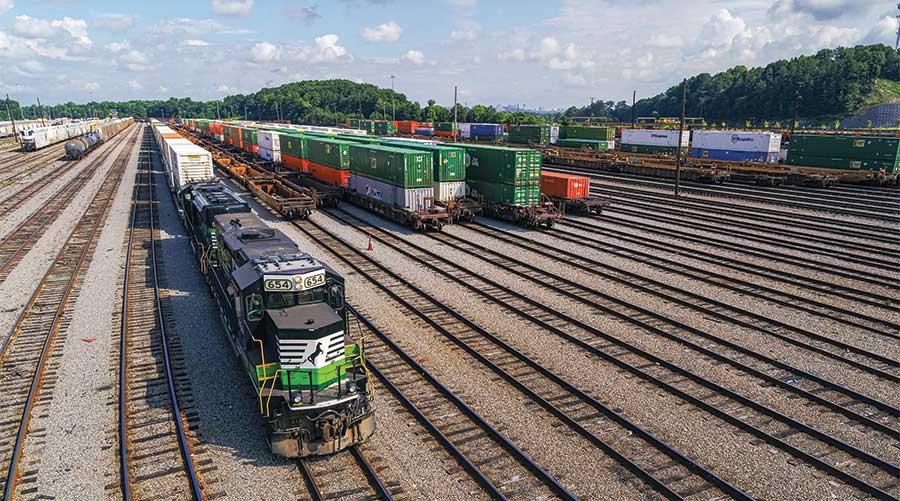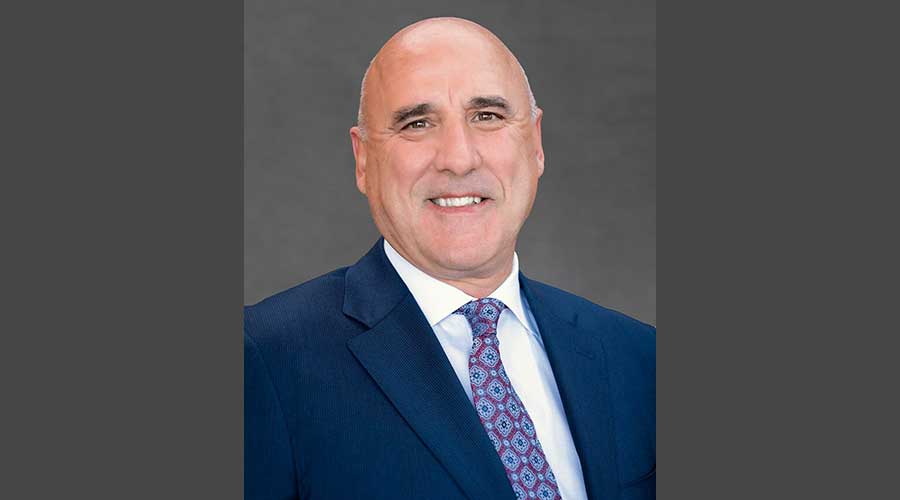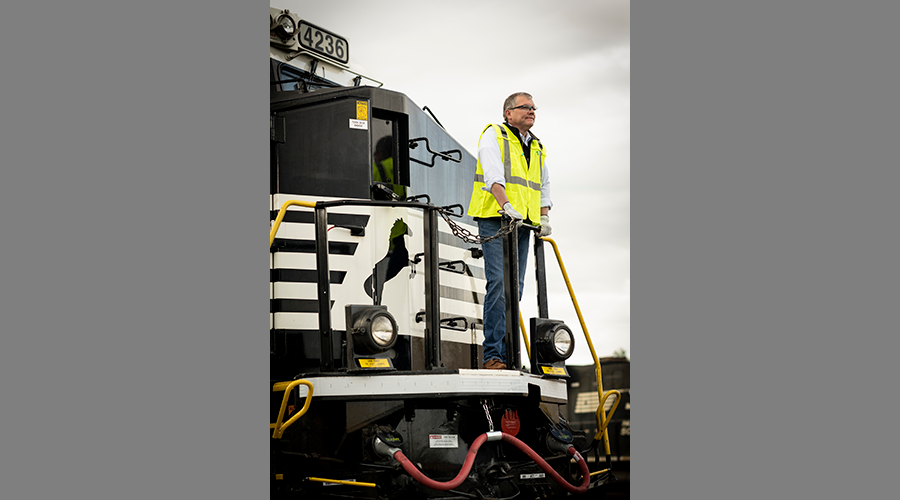Stay updated on news, articles and information for the rail industry
May 2014
Rail News: Norfolk Southern Railway
Norfolk Southern Railway to roll out modified GE locomotive model as part of multi-year rebuild program
— by Jeff Stagl, Managing Editor
Norfolk Southern Railway long has aimed to reduce locomotive fleet costs and increase motive-power efficiency by rebuilding and redeveloping its yard and local switchers. Now, the Class I is trying to apply its rebuilding expertise to GE Transportation road locomotives — and develop a new model in the process.
Through a six-year program, NS plans to rebuild 84 GE Dash 8 locomotives that were manufactured in 1989 or 1990, and lack modern electronics and amenities.
Pegged to become the railroad's first-ever Dash 8.5 locomotives, the rebuilt units will feature custom wide-body cabs and high-tech engines designed to boost fuel efficiency and reduce air emissions.
About three-fourths of the road fleet are GE models and a rebuild will cost half as much as a new locomotive, according to the Class I.
With lower operating costs in mind, Chairman and Chief Executive Officer Wick Moorman several years ago approached the Mechanical Department to determine if expertise gleaned from rebuilding yard and local switchers — including successful transformations of Electro-Motive Diesel locomotives into SD40E units — could carry over to the road fleet, says NS Vice President of Mechanical Don Graab.
"We decided that if we could do yard and locals, why not road power?" he says.
The 4,000-horsepower Dash 8.5s will be very similar to Dash 9s, except they won't feature low-weight transfer trucks. The Dash 8.5s will incorporate electronic systems — such as electronic fuel injection — and be configured to wirelessly issue health-status reports, says Graab.
The first Dash 8.5 is expected to roll out of the railroad's Roanoke, Va., shop and roll onto a test track sometime in May. NS will need to obtain U.S. Environmental Protection Agency (EPA) approval for the unit's new engine configuration, says Graab.
The Center Of It All
The Roanoke shop has become a "center for excellence" for the rebuild program and other work performed on GE units, such as engine repairs for Evolution® Series locomotives that were introduced in 2005, he says.
NS doesn't enter into maintenance agreements with GE the way other railroads do, preferring instead to maintain its own GE units. The locomotive builder provides parts and guidance, says Graab.
"We found it's a lower cost to maintain them ourselves. The feeling was we didn't want to turn over such valued assets to a third party," he says.
The railroad's rebuilding efforts evolved from the GE arrangement, says Graab. To ensure the Roanoke shop is optimally equipped for the program, NS last year installed a $1 million CNC line-boring machine that's designed to repair engine frames that typically had been scrapped.
NS now saves about $155,000 for each salvaged GE frame. The department also plans to replace bridge cranes at the shop and is considering a drop table, says Graab.
More Hands On Deck
In addition, NS is adding workers at the shop, which employs 276 people. About a dozen recruits were hired in January to assume various positions, such as machinists and electricians.
As the program ramps up after tests are conducted and the EPA approval process is completed, the shop will turn out 18 Dash 8.5s per year, says Graab.
In the meantime, the department is considering the next potential outgrowth of the rebuild effort: converting motors from DC-traction to AC-traction on a portion of NS' 1,200 Dash 9s. Proposals from three companies on three continents are under analysis, and GE is one of the proposers, says Graab.
"The conversion would make the units more reliable and we would gain tractive effort," he says.
Keywords
Browse articles on Norfolk Southern Railway GE Transportation locomotive Electro-Motive DieselContact Progressive Railroading editorial staff.


 LRW Honors Amtrak’s Acheson As Railway Woman Of The Year
LRW Honors Amtrak’s Acheson As Railway Woman Of The Year
 From Editor-In-Chief Foran: Of Gender Equity And Inclusion
From Editor-In-Chief Foran: Of Gender Equity And Inclusion
 Spotlight On Some Of Today’s Rail Safety Products
Spotlight On Some Of Today’s Rail Safety Products
 Women of Influence in Rail eBook
Women of Influence in Rail eBook
 railPrime
railPrime






